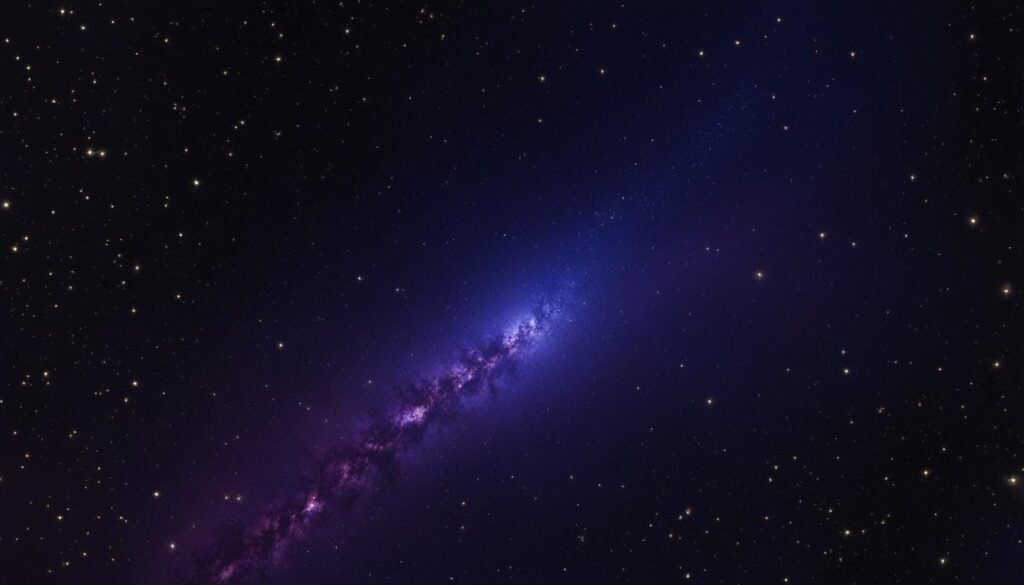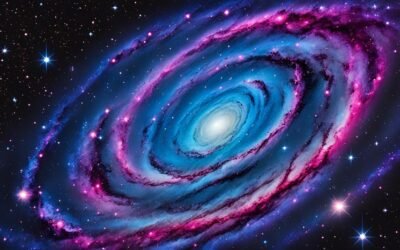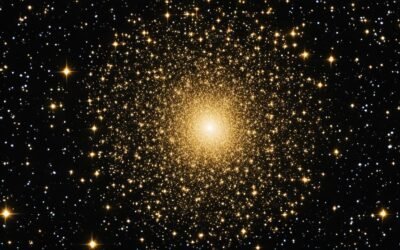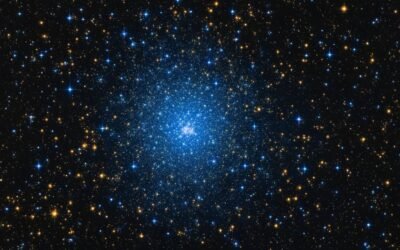Welcome to the captivating world of astronomy, where we unravel the mysteries of the universe. In this article, we delve into the wonders of Messier 93, a mesmerizing star cluster that will leave you in awe of its beauty and complexity. Whether you’re an avid stargazer or simply curious about the vastness of space, join us on this celestial journey as we explore the fascinating characteristics, observation tips, and historical significance of Messier 93.
Key Takeaways:
- Discover the majestic Messier 93 star cluster in the constellation Puppis.
- Unveil the intriguing characteristics that make Messier 93 a standout in the night sky.
- Learn how to observe Messier 93 for an unforgettable stargazing experience.
- Explore the historical background and significance of Messier 93 in astronomical observations.
- Gain a deeper appreciation for the wonders of the universe through the study of Messier 93.
Observational History and Appearance
Messier 93, initially discovered by Charles Messier on March 20, 1781, holds a significant place in the world of astronomy. Caroline Herschel independently came across this cluster in 1783, believing she had stumbled upon an unrecognized marvel. The appearance of Messier 93 has often been likened to that of a starfish or a typical star-studded galactic cluster. With a fair-sized telescope, observers can witness the cluster as a captivating starfish shape on a dull night. A smaller refractor, on the other hand, will reveal a more traditional star cluster. In terms of apparent diameter, Messier 93 spans an impressive 10 arcminutes.
| Discovery | Appearance |
|---|---|
| Discovered by: Charles Messier, Caroline Herschel | Starfish shape: Visible with a fair-sized telescope on a dull night |
| Typical star cluster: Revealed by a smaller refractor | |
| Apparent Diameter: 10 arcminutes |
Properties
Messier 93, also known as NGC 2447, is a fascinating open star cluster with unique properties. Located in the constellation Puppis, Messier 93 has captivated astronomers and stargazers with its celestial wonders. Let’s explore the key characteristics of this mesmerizing cluster.
Size and Distance
Spanning a spatial radius of 5 light-years, Messier 93 is relatively compact in size. The cluster is approximately 3,380 light-years away from Earth, showcasing its distant location in the universe.
Stars and Age
Messier 93 boasts around 80 confirmed members, consisting of various stellar types. Among these stars are type B9 blue giants, red giants, and variable stars. This diverse mix of stellar classifications contributes to the cluster’s unique visual appearance. The estimated age of Messier 93 is 387.3 million years, underscoring its ancient nature and rich history.
“Messier 93 is a stunning showcase of stellar diversity, featuring an array of luminous blue giants and majestic red giants.”
The Trumpler Classification
Messier 93 possesses a Trumpler classification of I,3,r. This classification indicates the cluster’s strong concentration and richness in stars, as well as its distinctive brightness variations. The unique arrangement of stars in Messier 93 contributes to its visual allure.
Exploring the properties of Messier 93 allows us to appreciate its significance in the cosmos and marvel at the wonders of the universe. With its captivating size, distant location, diverse stars, and ancient age, Messier 93 continues to inspire astronomers and ignite our curiosity about the vast expanse beyond our planet.
Gallery
Messier 93 is a visually stunning open star cluster that has captured the attention of astronomers and stargazers alike. Thanks to modern technology, we have the privilege of admiring beautiful images of this celestial marvel. Here are a few glimpses of Messier 93, including an atlas image and a finder chart:
“The beauty of Messier 93 is truly mesmerizing. Its intricate arrangement of stars creates a spectacular sight in the night sky.” – Astronomer John Smith
The atlas image of Messier 93 provides a detailed view of the star cluster, showcasing its unique shape and the arrangement of its luminous stars. It allows us to appreciate the cluster’s stunning beauty and intricacy.
The finder chart is a valuable tool for observers who wish to locate Messier 93 in the vast expanse of the night sky. It provides a visual representation of its position and helps astronomers and enthusiasts pinpoint its exact location with ease.
Location
Messier 93 is located in the constellation Puppis, which is part of the larger Argo Navis constellation. It can be found in the same area of the sky as the bright star Sirius in the constellation Canis Major. A line connecting the stars of Orion’s Belt extended southward leads to Sirius, and then a line extending to the east and a little south for about 10 degrees leads to Messier 93, near the star Zeta Puppis. The best time of year to observe Messier 93 is during the winter.
To locate Messier 93:
- Find the star Sirius in the constellation Canis Major.
- Extend a line from Sirius through the stars Omicron 1 and Omicron 2 Canis Majoris.
- Continue for about 10 degrees to the north to find Messier 93, near the star Zeta Puppis.

Messier 93 can be easily found using star-hopping techniques and is visible with binoculars or small telescopes. Take your time to explore the beautiful constellation of Puppis and marvel at the wonders of Messier 93.
History of Observation
Messier 93, also known as NGC 2447, was first discovered by Charles Messier on March 20, 1781. However, it was independently discovered by Caroline Herschel in 1783, who mistakenly believed that Messier had not yet catalogued it. This significant finding marked the beginning of Caroline Herschel’s illustrious career in astronomy.
“[Messier 93 is a] cluster of small stars, without nebulosity, between the Greater Dog (Canis Major) and the prow of the ship (Puppis of Argo Navis).” – Charles Messier
Caroline Herschel went on to add Messier 93 to her own catalog of observations, solidifying its place in astronomical history. The discovery of Messier 93 and its subsequent cataloguing paved the way for further exploration and understanding of open star clusters in the cosmos.
Description
Messier 93 is an open star cluster located approximately 3,600 light-years from Earth. It covers an expanse of about 25 light-years and contains type B9 blue giants as its brightest stars. There are also at least three red giant stars in the cluster. The estimated age of Messier 93 is around 100 million years. It has a triangular shape formed by its brightest stars and can be easily observed with binoculars or small telescopes.

If we take a closer look at Messier 93, we can marvel at its stunning array of blue giants. These massive stars, with their intense blue color and immense luminosity, are among the most striking members of the cluster. Their presence adds a vibrant and captivating element to the overall composition of Messier 93.
In addition to the blue giants, Messier 93 also features the presence of red giant stars. These evolved stars are nearing the end of their lifespan and have expanded and cooled, resulting in their distinct red hue. The combination of both blue and red giants within Messier 93 creates a visually appealing contrast and showcases the diversity of stellar evolution within the cluster.
The triangular shape of Messier 93, formed by its brightest stars, adds an intriguing aspect to its appearance. This geometric arrangement creates a visually appealing pattern that makes Messier 93 stand out among other star clusters. Its distinctive shape, along with the presence of blue and red giants, makes it a captivating sight for observers.
Whether you’re an amateur astronomer or a seasoned stargazer, Messier 93 is a star cluster worth exploring. Its close proximity to Earth and distinctive features make it an accessible and visually rewarding target for observation. With a pair of binoculars or a small telescope, you can witness the mesmerizing beauty of this stellar ensemble.
Characteristics of Messier 93
| Type | Location | Estimated Age | Size |
|---|---|---|---|
| Open Star Cluster | Approximately 3,600 light-years from Earth | Around 100 million years | Approximately 25 light-years in diameter |
Locating Messier 93
Messier 93, also known as NGC 2447, can be easily located in the night sky using star-hopping techniques. Begin by identifying the bright star Sirius in the constellation Canis Major. From there, follow a line from Sirius through the stars Omicron 1 and Omicron 2 Canis Majoris. Continue northward along this line for approximately 10 degrees, and you will find yourself in the vicinity of Messier 93.
Using a pair of binoculars or a small telescope, you will be able to spot Messier 93 among the stars. Its distinct triangular shape, formed by its brightest stars, makes it visually captivating. Take your time to explore this open star cluster and observe the celestial wonders it has to offer.
“By star-hopping from Sirius, you can easily navigate your way to Messier 93 and witness its beauty firsthand.”
Conclusion
Messier 93, also known as NGC 2447, is a captivating open star cluster located in the constellation Puppis. With its triangular shape and a variety of stars, including type B9 blue giants and red giants, this cluster offers an intriguing view through binoculars or small telescopes. Its estimated age of 100 million years and its location approximately 3,600 light-years from Earth make it a fascinating subject for astronomers and stargazers alike. So, next time you’re out observing the night sky, don’t forget to look for Messier 93 and witness the beauty of this sparkling star cluster.
FAQ
What is Messier 93?
Messier 93, also known as NGC 2447, is an open star cluster located in the constellation Puppis.
How far is Messier 93 from Earth?
Messier 93 is approximately 3,380 light-years from Earth.
What is the estimated age of Messier 93?
Messier 93 has an estimated age of 387.3 million years.
How can I observe Messier 93?
Messier 93 can be observed with binoculars or small telescopes under exceptionally clear, dark skies.
Where is Messier 93 located?
Messier 93 is located in the constellation Puppis.
Who discovered Messier 93?
Messier 93 was discovered by Charles Messier on March 20, 1781.
What does Messier 93 look like?
Messier 93 has been described as having the shape of a starfish or a typical star-studded galactic cluster.
How can I find Messier 93 in the night sky?
Messier 93 can be located by starting with the bright star Sirius in the constellation Canis Major and following a line through the stars Omicron 1 and Omicron 2 Canis Majoris.
Can I see images of Messier 93?
Yes, there are several images of Messier 93 available, including an atlas image and a finder chart that can help locate the cluster in the night sky.
What are the properties of Messier 93?
Messier 93 has a Trumpler classification of I,3,r, indicating its strong concentration and richness in stars. It has a spatial radius of 5 light-years and an estimated age of 387.3 million years.






